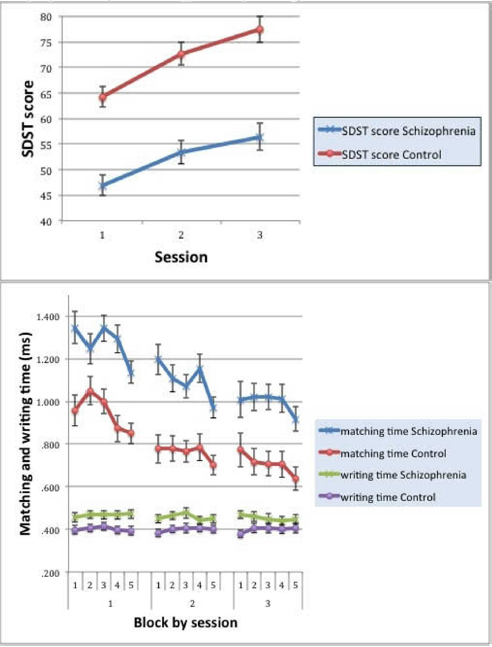No CrossRef data available.
Published online by Cambridge University Press: 15 April 2020
Processing speed deficits are very differentiating cognitive impairments in schizophrenia (Brébion 2014) and can be most adequately assessed by a symbol-digit coding task (Dickinson 2007). A digitized version, the Symbol Digit Substitution Test (SDST), allows for the decomposition of processing speed into its motor and cognitive components. Learning performance on both components was compared between schizophrenia patients and age-matched controls.
In the SDST, digits were drawn as fast as possible under their corresponding symbol. The task was administered on day 1, 2 and 7 to patients with schizophrenia (N=30) and age-matched controls (N=30) and performed on a digitizing tablet, which allowed precise measurement of the time to write each digit (writing time) and to decode symbols into digits (matching time). Learning was assessed by a change of matching time over sessions and repetition blocks within each session.
Patients with schizophrenia had a lower test score and a longer writing and matching time compared to controls. Repetitions between and within sessions demonstrated substantial decreases in matching time, while writing time remained constant. Remarkably, the rate of learning was similar between schizophrenia patients and controls.
Although patients with schizophrenia display both sensorimotor (writing time) and cognitive slowing (matching time), their test results improve similarly to the controls in long and short term. This finding may be attributed to a decrease in matching time, explained by the learning of the symbol-digit relations.

Comments
No Comments have been published for this article.